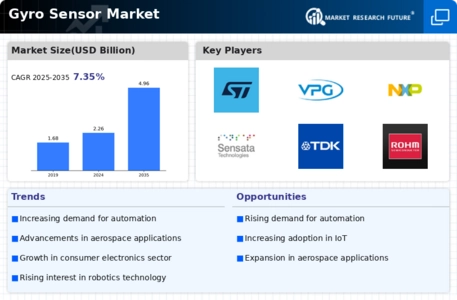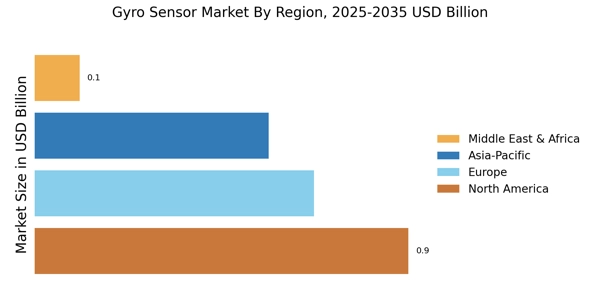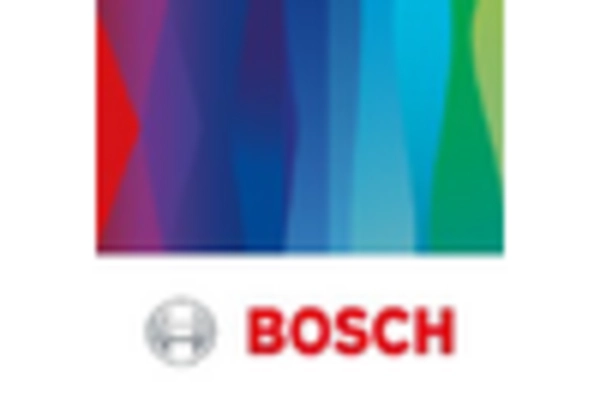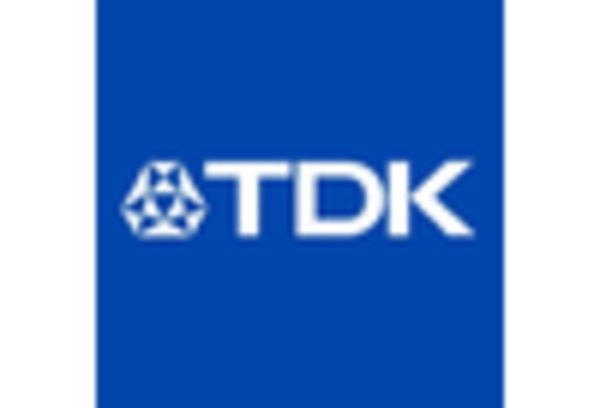Rising Demand in Robotics
The Gyro Sensor Market is experiencing a notable surge in demand due to the increasing integration of gyro sensors in robotics applications. As industries adopt automation, the need for precise orientation and motion detection becomes paramount. Gyro sensors facilitate enhanced stability and control in robotic systems, which is crucial for tasks ranging from manufacturing to healthcare. According to recent data, the robotics sector is projected to grow at a compound annual growth rate of over 20% in the coming years, thereby driving the demand for gyro sensors. This trend indicates a robust market potential for gyro sensor manufacturers, as they cater to the evolving needs of the robotics industry.
Expansion in Virtual Reality
The Gyro Sensor Market is significantly influenced by the expansion of virtual reality (VR) technologies. As VR applications proliferate across gaming, training, and simulation sectors, the demand for accurate motion tracking becomes essential. Gyro sensors play a critical role in providing the necessary feedback for immersive experiences, allowing users to interact seamlessly with virtual environments. Market analysis suggests that the VR market is expected to reach a valuation of several billion dollars by 2026, which could lead to a corresponding increase in gyro sensor adoption. This growth trajectory highlights the potential for gyro sensor manufacturers to capitalize on the burgeoning VR landscape.
Advancements in Drone Technology
The Gyro Sensor Market is being propelled by advancements in drone technology. As drones find applications in various sectors, including agriculture, surveillance, and delivery services, the need for precise navigation and stability becomes increasingly critical. Gyro sensors are integral to ensuring that drones maintain their orientation and perform effectively in diverse conditions. The drone market is anticipated to expand significantly, with projections indicating a growth rate of around 25% over the next few years. This expansion presents a substantial opportunity for gyro sensor manufacturers to innovate and provide solutions tailored to the evolving demands of the drone industry.
Growing Automotive Safety Regulations
The Gyro Sensor Market is influenced by the increasing automotive safety regulations that mandate the integration of advanced driver-assistance systems (ADAS). Gyro sensors are essential components in these systems, providing critical data for features such as electronic stability control and lane-keeping assistance. As safety standards become more stringent, automotive manufacturers are compelled to adopt technologies that enhance vehicle safety. Market forecasts suggest that the ADAS market will experience a compound annual growth rate of over 18% in the coming years, which is likely to drive the demand for gyro sensors. This regulatory landscape presents a favorable environment for gyro sensor manufacturers to expand their market presence.
Increased Focus on Wearable Technology
The Gyro Sensor Market is witnessing a significant boost from the growing emphasis on wearable technology. Devices such as smartwatches and fitness trackers increasingly incorporate gyro sensors to monitor user activity and provide accurate motion data. This trend is supported by the rising consumer interest in health and fitness, which has led to a surge in wearable device sales. Recent statistics indicate that the wearable technology market is projected to grow at a rate of approximately 15% annually. Consequently, this growth in wearables is likely to drive the demand for gyro sensors, as manufacturers seek to enhance the functionality and accuracy of their products.
















Leave a Comment